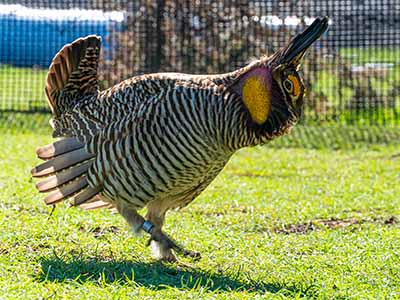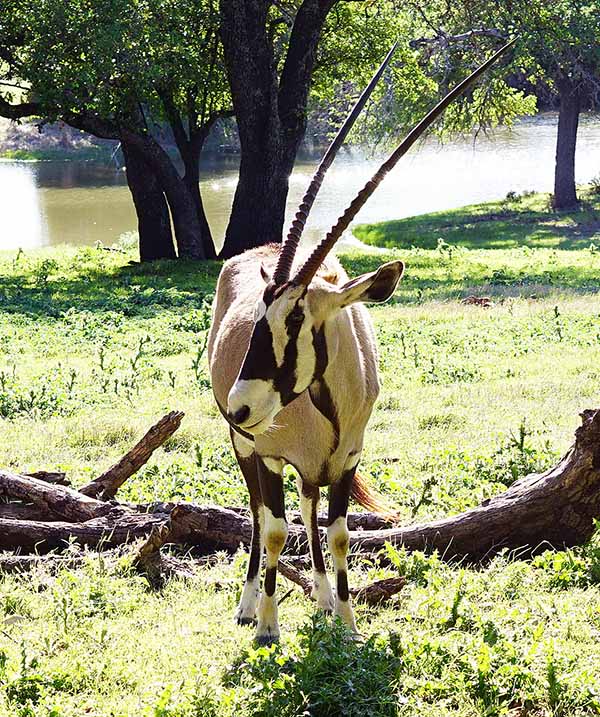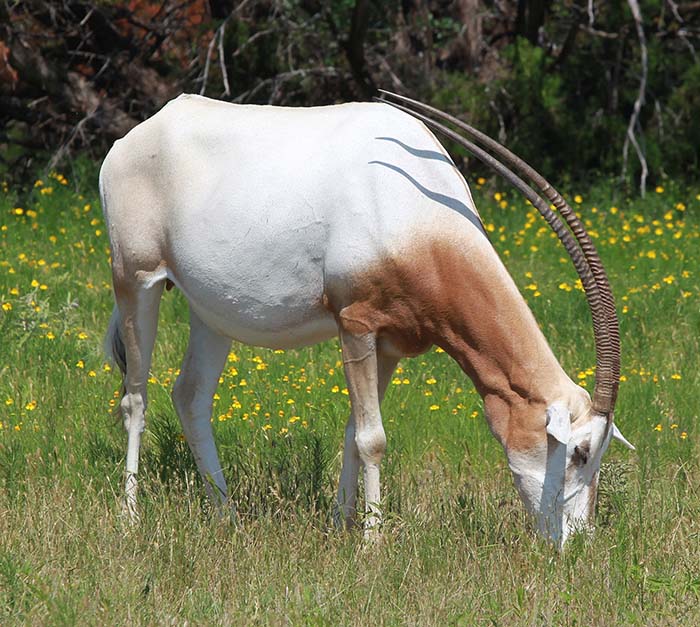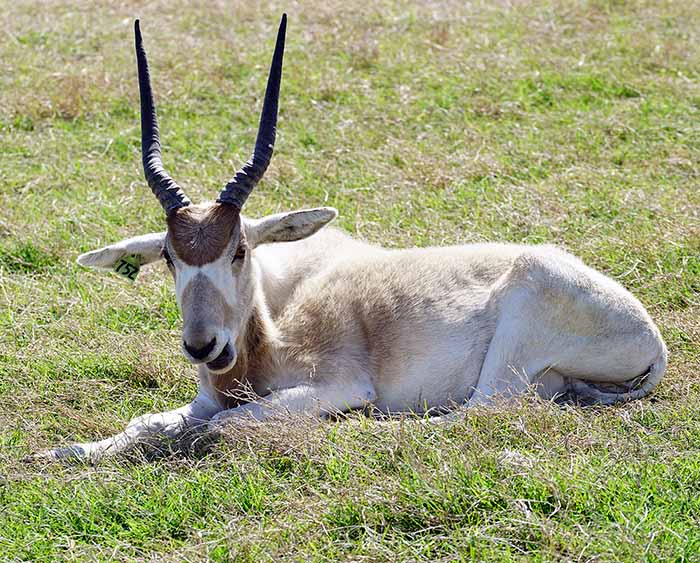Fossil Rim Wildlife Center has a longstanding history and an active role in conducting and supporting quality research projects that either improve the captive management of endangered species or further the conservation of such species in their natural habitats. Over the years, we have developed close partnerships with other conservation institutions and agencies that allow more in-depth research and expand Fossil Rim’s reach beyond our own borders. Here are several research endeavors that involve Fossil Rim’s partnership with other conservation leaders.
ATTWATER'S PRAIRIE CHICKEN RECOVERY TEAM
In addition to participating in the captive breeding of this highly endangered Texas grouse, Fossil Rim has partnered with several investigators to better understand and surmount challenges we have encountered. In collaboration with the nutritional services department of the Fort Worth Zoo and the department of veterinary services at the University of Sydney in Australia, a comprehensive examination of captive APC production and nutrition was undertaken. The resulting changes in nutrition have markedly improved production and survival of chicks at the institutions raising APCs, thus directly impacting the number of chicks available for release.
Investigation into the crippling bird virus reticuloendotheliosis (REV) has brought together several partners, including the University of Georgia. Researchers there used the virus that infected Fossil Rim birds in 2004 to better understand its behavior by studying it in captive quail. Knowing as much as we can about REV will improve methods of detection, diagnosis, impact on the species and associated pathology. In addition, a vaccine for protection against REV infection was developed and tested at Texas A&M University.
CONSERVATION CENTERS FOR SPECIES SURVIVAL (C2S2)
Formed in 2005, C2S2 is a group of conservation breeding centers and likeminded institutions with an explicit purpose: to cooperatively apply and develop their unique resources for the survival of threatened species with special needs – large areas, natural group sizes, minimal public disturbance and research. C2S2 has developed and implemented programs that take advantage of its unique space (more than 100,000 acres), and by combining their scientific and management expertise, these centers work towards the C2S2 mission to provide leadership in studying and creating self-sustaining populations ex situ and in situ of some of the world’s most endangered species. C2S2 is a 501(c)3 nonprofit organization and is homebased at Fossil Rim Wildlife Center.
HOOFSTOCK MANAGEMENT AND C2S2
Two of the most exciting undertakings at Fossil Rim have converged in a multiyear research investigation into the management of hoofstock herds here at Fossil Rim. With our open spaces being ideal for large herds, we manage our hoofstock populations differently than traditional zoos. In an effort to improve management of our large captive ungulate species, C2S2 has implemented a natural approach to management of certain hoofed animals.
The goal is to provide optimal breeding intervals to maximize successful calving and weaning times. By understanding the ecosystem, we can capitalize on the natural resources available to the herds at different times of the year. This system requires an intact bull that is with the herd for two months, followed by 10 months with a vasectomized male to allow for normal herd structure.
Currently at Fossil Rim, the addax, waterbuck, sable and gemsbok are involved in this approach. Ultimately, most antelope at Fossil Rim will be managed through this system.
A second important partner in this endeavor is Texas A&M University. Its renowned animal experts are undertaking a behavioral study of these experimentally managed herds. Fossil Rim offers a Behavior Research internship for upper-level undergraduate students interested in contributing to this study. Visit Fossil Rim’s Internships page for more information.
Scimitar-horned oryx video collar investigation
In 2015, Fossil Rim tested the effects of GPS collars on scimitar-horned oryx, making sure they didn’t cause behavioral changes or have impacts on overall health. A companion study started in 2019 asks similar questions using a new GPS collar that also has video and accelerometer capability. We wanted to test the heavier cameras here on Fossil Rim’s scimitar before using them on animals being released in Chad. If, like in the last study, we find no difference between collared and uncollared animals, the video collars will be used on animals released to the wild in Chad and will enhance the information gathered from the animals. This study is important for three reasons: 1. It has direct conservation impact on a release program. 2. It is a collaboration with one of our long time research partners, the Smithsonian Conservation Biology Institute. 3. It fulfills another mission of Fossil Rim, training young conservation professionals. The project data was collected and will be analyzed by our behavior research - hoofstock intern.
Addax sexual maturity and immobilization study
When do young addax males become sexually mature? We have some idea, but this reproductive study aims to identify the age at which sperm are produced. Since the animals are immobilized for the electroejaculation procedure, our veterinarians also studied the anesthesia itself, measuring multiple parameters including time to recumbency, quality of muscle relaxation, and multiple physiological parameters including blood gases. A Fossil Rim Animal Care Specialist is undertaking the reproductive half of the study as his master’s thesis at Tarleton State University, another research partner. Our formal MOU to conduct research over the last several years makes this the seventh Tarleton master’s project with data collected at Fossil Rim. Our Veterinary Fellow is presenting the addax anesthesia data at the annual meeting of the American Association of Zoo Veterinarians.
Improving Attwater’s prairie-chicken chick survivability
In collaboration with US Fish and Wildlife and our APC Recovery Program partner the Houston Zoo, we are studying the impact of adult cecal bacteria on chick growth and survivability. Our chicks are reared by humans, so they are not exposed to the normal bacteria they would find in the wild. Will offering adult APC bacteria significantly impact the rate of growth, survivability, and level of veterinary care needed? We hope to better understand the impact of gut bacteria on chicks through this study, and improve the odds of success for this native Texas grouse.






